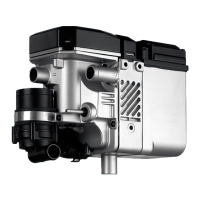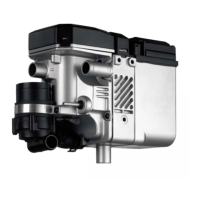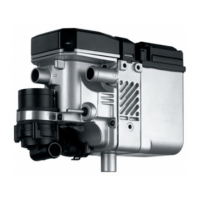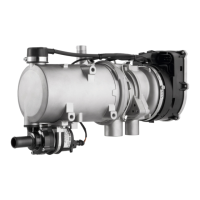1Introduction DBW 2010 / 2016
102
The heater may only be installed in motor vehicles or in inde-
pendent heating systems with a minimum coolant quantity of
10 litres.
The heater may not be installed in the cab or the passenger
compartment of vehicles. If the heater is nevertheless installed
in an area of this type, then the installation box must be sealed
off tight to the vehicle interior. The installation box must be
sufficiently ventilated from the outside so that a maximum
temperature of 85 °C is not exceeded in the installation box.
Malfunctions can occur if this temperature is exceeded.
WARNING
The heater must not be operated in enclosed areas such
as garages and workshops without an emissions
extraction system, even if you use the timer, because of
the risk of asphyxiation and poisoning.
The heater must be switched off at filling stations and
tank farms as a result of the risk of explosion.
IMPORTANT
Where flammable vapours or dust can form (e.g. near
fuel, coal, wood-dust or grain warehouses, etc), the
heater must be switched off due to the danger of
explosion.
The heater may not be operated near flammable
materials, e.g. dry grass, leaves, cardboard, paper, etc.
A temperature of 110 °C (storage temperature) must not be
exceeded in the vicinity of the control unit (for example, dur-
ing painting work on the vehicle).
Otherwise the electronics may suffer permanent damage.
When checking the coolant level, the procedure described by
the vehicle manufacturer must be followed. The water in the
heating circuit of the heater must contain at least 10 % of a
brand-name antifreeze according to manufacturer's instruc-
tions (corrosion protection).
Additives to the heating circuit must not attack metal, plastic
or rubber and must not form deposits.
The opening pressure in the vehicle cooling system – generally
specified on the radiator cap – must have an operating pres-
sure between 0.4 and 2.0 bar (also applies to separate heat-
ing circuit).
1.6 Statutory regulations governing
installation
NOTE:
The regulations of these guidelines are binding in the scope of
the EU Directive 70/156/EEC and/or EC/2007/46 (for new vehi-
cle models from 29/04/2009) and should also be observed in
countries in which there are no special regulations!
Excerpt from directive ECE-R 122 point 5 (part I) and
annex 7
Beginning of excerpt.
Part I
5.3 Vehicle Installation Requirements for Combustion
Heaters
5.3.1 Scope
5.3.1.1 Subject to paragraph 5.3.1.2, heaters shall be in-
stalled according to the requirements of paragraph 5.3.
5.3.1.2 Vehicles of category O having liquid fuel heaters are
deemed to comply with the requirements of paragraph 5.3.
5.3.2 Positioning of combustion heater
5.3.2.1 Body sections and any other components in the vicin-
ity of the heater must be protected from excessive heat and
the possibility of fuel or oil contamination.
5.3.2.2 The combustion heater shall not constitute a risk of
fire, even in the case of overheating. This requirement shall
be deemed to be met if the installation ensures an adequate
distance to all parts and suitable ventilation, by the use of
fire resistant materials or by the use of heat shields.
5.3.2.3 In the case of M2 and M3 vehicles, the combustion
heater must not be positioned in the passenger compart-
ment. However, an installation in an effectively sealed enve-
lope which also complies with the conditions in paragraph
5.3.2.2 may be used.
5.3.2.4 The label referred to in Annex 7, paragraph 4, or a
duplicate, must be positioned so that it can be easily read
when the heater is installed in the vehicle.
5.3.2.5 Every reasonable precaution should be taken in posi-
tioning the heater to minimize the risk of injury and damage
to personal property.
5.3.3 Fuel supply
5.3.3.1 The fuel filler must not be situated in the passenger
compartment and must be provided with an effective cap to
prevent fuel spillage.
5.3.3.2 In the case of liquid fuel heaters, where a supply sep-
arate from that of the vehicle is provided, the type of fuel and
its filler point must be clearly labelled.
5.3.3.3 A notice, indicating that the heater must be shut
down before refuelling, must be affixed to the fuelling point.
In addition a suitable instruction must be included in the
manufacturer’s operating manual.
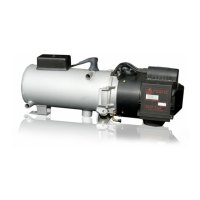
